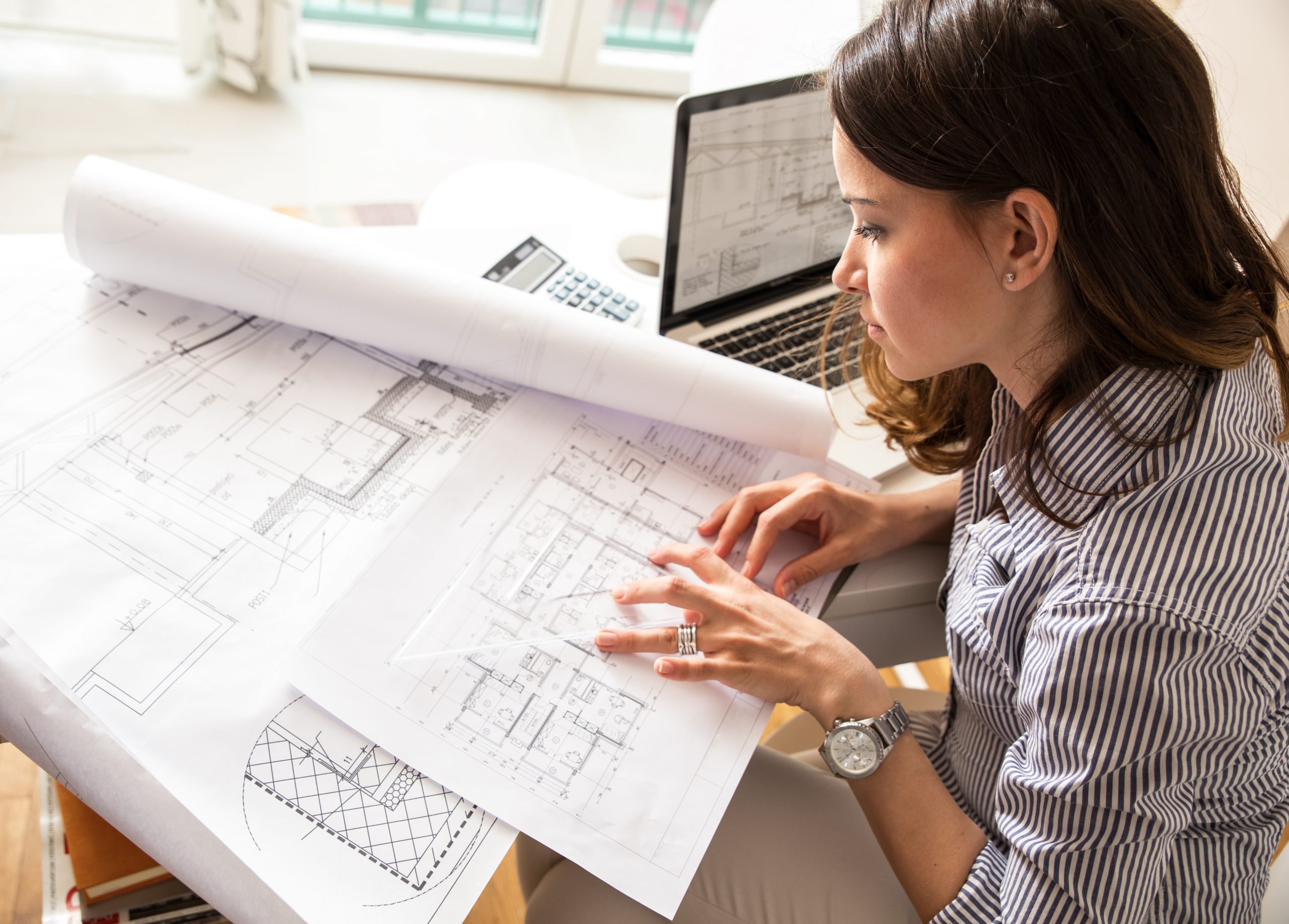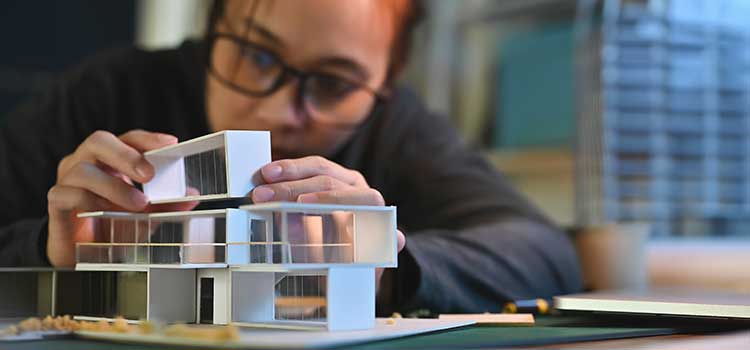Architect Portfolio Tips for Standing Out in the Industry
Architect Portfolio Tips for Standing Out in the Industry
Blog Article
Comprehending the Diverse Occupation Paths Available for Aspiring Architect
As an ambitious Architect, you have a globe of occupation courses waiting for you. Each course offers special difficulties and chances to apply your imagination and technological knowledge. Whether you're drawn to conventional architecture or the nuances of lasting style, there's a niche that lines up with your interests. Comprehending these varied choices can shape your expert journey, yet which instructions will you choose to discover initially?
Standard Style: Designing Structures and structures
Standard style concentrates on developing structures and structures that blend capability with visual charm. Your styles can show cultural heritage, showcasing regional customs while satisfying contemporary needs.
You'll develop skills in drafting, model-making, and website evaluation, enabling you to picture and communicate your concepts effectively. Involving with clients, you'll require to recognize their vision and convert it into possible styles.
Additionally, building codes and sustainability techniques are essential in your job, guaranteeing your frameworks are secure and ecologically friendly. As you grow in your job, you'll discover chances in household, industrial, and even restoration tasks, each offering one-of-a-kind challenges. Embracing typical design leads the way for a satisfying career that pays tribute to the past while shaping the future.
Urban Preparation: Forming Neighborhoods and Public Spaces
As an aspiring Architect, you can play an important role as a city coordinator, changing exactly how communities communicate and operate. By employing area involvement techniques, you'll assure that homeowners have a voice fit their atmosphere. And also, incorporating sustainable layout concepts will certainly aid develop areas that not only meet today's requirements yet also secure the future.
Role of Urban Planners
While numerous could assume of engineers as the sole dreamers behind buildings, city coordinators play an important role in forming the more comprehensive landscape of communities and public rooms. By teaming up with various stakeholders, you'll help create parks, transport systems, and household locations that promote social interaction and availability. Your experience in spatial style and neighborhood dynamics permits you to imagine future development while protecting cultural heritage.
Neighborhood Involvement Methods
Effective community involvement strategies are vital for city coordinators to guarantee that the voices of homeowners are listened to and valued in the planning procedure. To promote meaningful discussion, you must prioritize open discussion forums and workshops where neighborhood members can reveal their concepts and worries. Use studies and social networks to reach a more comprehensive audience, making certain diverse viewpoints are included. Collaborating with regional companies can improve trust fund and assist in deeper connections. It is necessary to give clear details regarding suggested projects and decision-making processes, allowing citizens to feel informed and encouraged. By actively including and listening responses, you'll create areas that mirror the community's demands, ultimately bring about more successful and lasting metropolitan settings. Embrace openness and continuous dialogue for enduring influence.
Lasting Layout Concepts
When designing city areas, incorporating lasting layout concepts is crucial for creating atmospheres that prosper both environmentally and socially. You ought to start by focusing on energy effectiveness, using materials that lower waste and advertise recycling. Take into consideration incorporating environment-friendly areas, like gardens and parks, to boost biodiversity and boost air top quality. Promoting walkability and public transport can minimize dependence on cars, fostering a much healthier neighborhood.
Designing with water preservation in mind is also vital-- think of rain yards and permeable surface areas to handle stormwater. Involving neighborhood participants during the preparation procedure assurances that the rooms you produce fulfill their requirements and encourage social communication. By embracing these concepts, you'll add to lively, sustainable urban landscapes that benefit every person.

Landscape Design: Creating Lasting Exterior Atmospheres
As you explore landscape design, you'll discover crucial style principles that develop attractive and useful exterior areas. Sustainable practices play a vital function in ensuring these settings flourish while minimizing ecological effect. And also, you'll find a variety of occupation chances that allow you to make a genuine difference in exactly how individuals engage with nature.
Design Concepts in Landscape
Recognizing style concepts in landscape architecture is important for producing lasting outside settings that integrate with nature. You'll require to contemplate aspects like proportion, equilibrium, and range to assure your designs feel natural and inviting. Integrating indigenous plants not only enhances biodiversity yet also minimizes water use, making your landscape resilient. Think of the flow of area and how people communicate with it; paths and seating locations need to invite exploration and leisure. In addition, take note of seasonal modifications, creating with products that complement the surroundings year-round (Architect). By prioritizing sustainability and aesthetics, you can develop outdoor areas that enhance the neighborhood and advertise health. Accepting these concepts will certainly establish a solid structure for your profession in landscape style.
Sustainable Practices Overview
Sustainable techniques in landscape architecture not only concentrate on aesthetics yet likewise focus on ecological health and wellness and source preservation. You can make areas that advertise dirt health, such as utilizing natural materials and exercising permaculture principles. Ultimately, these methods ensure your layouts profit both individuals and the setting for years to come.
Profession Opportunities Exploration
With a solid foundation in lasting techniques, landscape design provides a selection of profession courses that enable you to make a meaningful influence on click to investigate the setting. Urban planners often team up with landscape designers to create environment-friendly areas in urban setups, improving city livability. If you're enthusiastic regarding education, consider coming to be a landscape design educator, motivating future generations.
Sustainable Style: Concentrating On Eco-Friendly Practices
As you discover your profession in style, accepting environmentally friendly methods can set you apart in an affordable field. Lasting design focuses on developing buildings that decrease environmental influence while enhancing passenger health. By integrating eco-friendly materials, energy-efficient systems, and sustainable structure techniques, you'll add to a greener future.
Beginning by acquiring expertise of eco-friendly certifications like LEED or BREEAM, which can bolster your qualifications. Take into consideration how natural light, ventilation, and thermal efficiency can enhance layout. Collaborate with engineers and ecological experts to introduce solutions that decrease waste and save sources.
Don't neglect the relevance of community involvement-- appealing neighborhood stakeholders can inspire styles that integrate with the setting. As customers significantly focus on sustainability, your expertise in environment-friendly techniques will certainly not just bring in jobs but also satisfy your enthusiasm for accountable design. Embrace this important element of the occupation, and enjoy your job prosper.
Historical Conservation: Protecting and Restoring Social Heritage
While you start on your building journey, think about the necessary duty of historical preservation in maintaining our social heritage. This area concentrates on the security and remediation of considerable buildings, websites, and frameworks that inform the stories of our past. By participating in historical conservation, you'll assist protect the architectural heritage that forms neighborhood identity.
As a historical preservation Architect, you'll examine historic relevance and evaluate the problem of frameworks. You'll function closely with chroniclers and preservationists to ensure genuine restoration methods are employed. This occupation path permits you to mix imagination with study, enabling you to make options that value initial materials and craftsmanship.
Your job not only adds to sustainability by reusing existing buildings but likewise cultivates a sense of satisfaction within communities. Embracing this course will assist you come to Get More Info be a guardian of history, protecting the stories and appearances that enrich our lives.
Inside Style: Enhancing Indoor Spaces
Historic preservation and indoor style both share a commitment to improving the constructed environment, however they concentrate on various aspects. While historic conservation stresses maintaining a structure's social and historic worth, interior design absolutely nos in on optimizing indoor areas for capability and aesthetic appeals.
As an ambitious Architect, you'll locate that interior architecture allows you to mix creative thinking with technological skills. You'll develop spaces that not only look great however also advertise convenience and effectiveness. This area entails comprehending just how light, shade, and products connect within a space, affecting mood and functionality.
You'll deal with different jobs, from household homes to business offices, making certain that each setting fulfills the needs of its residents. By focusing on individual experience, you can change interiors into functional and motivating rooms, making a significant effect on just how individuals engage with their surroundings. Embrace the opportunity to boost interior atmospheres and shape the means individuals work and live.
Industrial Design: Merging Capability With Aesthetics
Industrial layout plays an essential duty in developing products that seamlessly mix appearances with performance, guaranteeing that what you use day-to-day is not only aesthetically attractive yet likewise useful. As an aspiring Architect, you might immerse yourself in this field, concentrating on creating every little thing from furnishings to customer electronics. Your work involves recognizing individual requirements, products, and producing procedures, allowing you to create cutting-edge services that boost day-to-day experiences.
In industrial style, you'll typically work together with marketers, suppliers, and designers, ensuring that your designs are not just gorgeous but likewise viable. You'll learn to stabilize type and function, focusing on use without giving up design. By sharpening your abilities in laying out, 3D modeling, and prototyping, you'll be well-equipped to bring your ideas to life. This occupation course provides a dynamic atmosphere where imagination fulfills usefulness, making it a gratifying option for engineers thinking about forming the products of tomorrow.
Regularly Asked Inquiries
What Educational Accreditations Do I Need to Come To Be a Designer?
To become an architect, you'll require click this site an expert degree in style, usually a Bachelor's or Master's. Additionally, you'll have to complete a teaching fellowship and pass the Architect Enrollment Assessment to practice legitimately.
Exist Certification Requirements for Different Building Profession Paths?
Yes, there're qualification requirements for different building paths. Architect. You'll require to pass exams, total teaching fellowships, and often seek specialized training, depending on your picked emphasis, like landscape design, metropolitan layout, or historic preservation
What Software Application Abilities Are Crucial for Engineers Today?

How Can I Gain Practical Experience While Examining Style?
You can get functional experience by interning at building companies, taking part in design competitions, volunteering for community tasks, or teaming up with schoolmates on real-world projects. These opportunities improve your abilities and construct valuable connections in the industry.
What Work Opportunities Exist Outside Typical Design Firms?
You can discover different job possibilities outside standard architecture companies, like urban preparation, indoor layout, landscape style, construction administration, actual estate growth, or also roles in sustainability consulting. Each offers one-of-a-kind obstacles and incentives.
Whether you're drawn to traditional style or the nuances of lasting style, there's a specific niche that aligns with your interests.When creating city spaces, incorporating sustainable design concepts is crucial for developing atmospheres that prosper both environmentally and socially.As you check out landscape architecture, you'll uncover necessary layout concepts that develop stunning and functional outdoor spaces.Comprehending style concepts in landscape design is important for producing sustainable outside environments that harmonize with nature.In commercial design, you'll commonly collaborate with marketers, engineers, and suppliers, making certain that your layouts are not just stunning however additionally possible.
Report this page